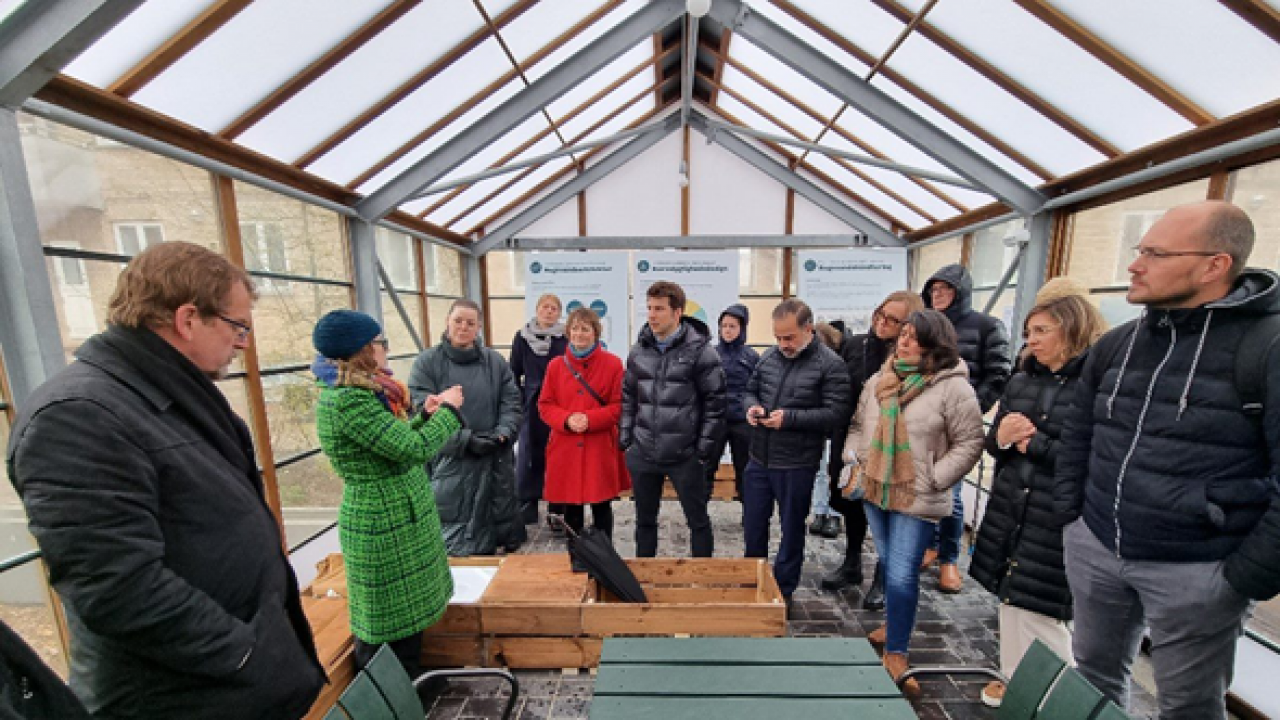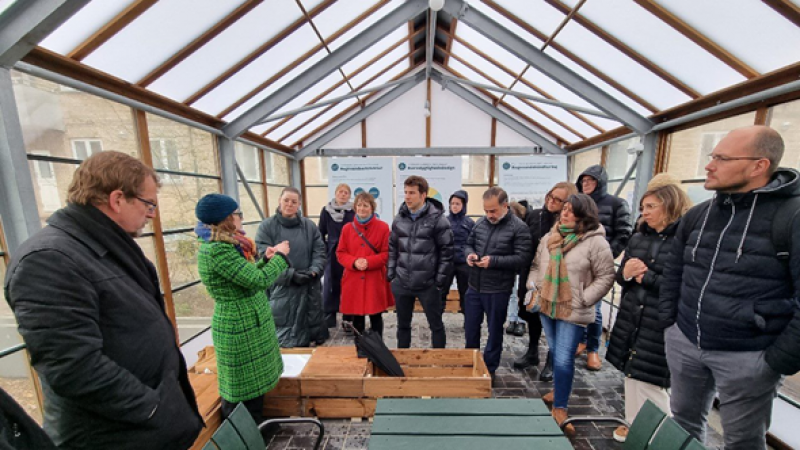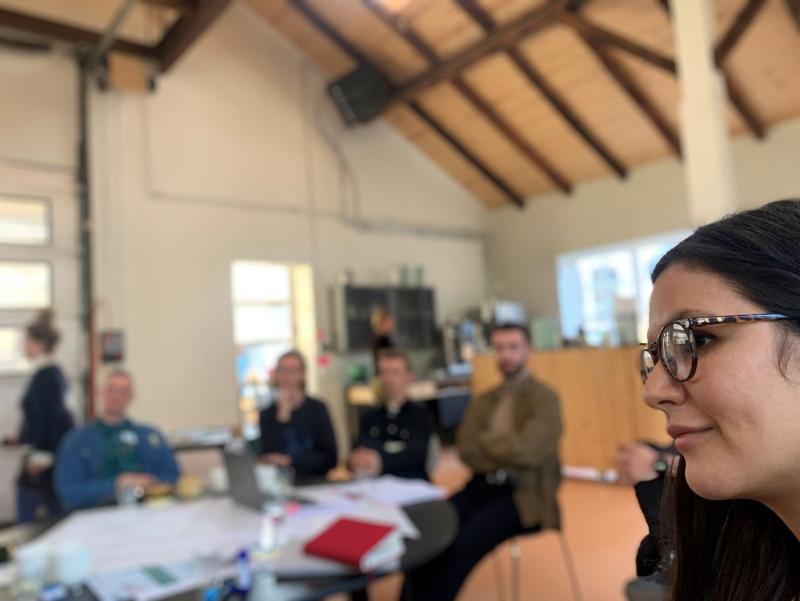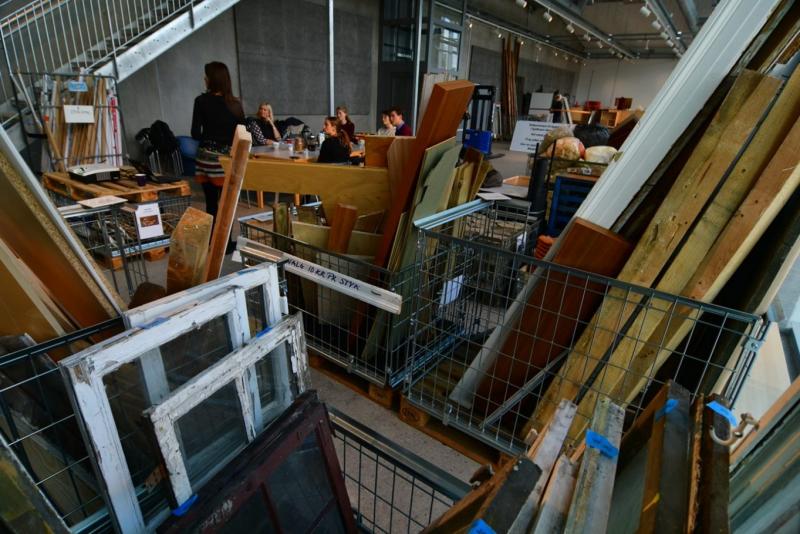
[[{"fid":"48783","view_mode":"default","fields":{"format":"default","field_file_image_alt_text[und][0][value]":"Janus Christoffersen","field_file_image_title_text[und][0][value]":"Janus Christoffersen","field_author[und][0][value]":"City of Copenhagen"},"link_text":null,"type":"media","field_deltas":{"1":{"format":"default","field_file_image_alt_text[und][0][value]":"Janus Christoffersen","field_file_image_title_text[und][0][value]":"Janus Christoffersen","field_author[und][0][value]":"City of Copenhagen"}},"attributes":{"alt":"Janus Christoffersen","title":"Janus Christoffersen","height":258,"width":258,"style":"margin: 10px; float: right; height: 100px; width: 100px;","class":"media-element file-default","data-delta":"1"}}]]URGE partner the city of Copenhagen holds high ambitions with regards to climate neutrality. Linked to the EU transition goals and the National Energy and Climate Plan, the City of Copenhagen aims to be the world’s first carbon-neutral capital city by 2025 lead by The CPH 2025 Climate Plan The CPH 2025 Climate Plan | Urban development (kk.dk) and Circular Copenhagen – Resource and Waste Management Plan 2019-2024 Circular Copenhagen - Resource and Waste Management Plan 2024 2019 (itera.dk). These plans, strategies, legislations and policies impact the scope of Circular Economy (CE) in the building sector and will be presented throughout the report to elucidate opportunities and barriers to the CE transition efforts of the Building Renewal Unit and the City of Copenhagen.
The Building Renewal Unit is part of the Technical and Environmental Administration in the City of Copenhagen and supports renovations in the existing built environment of the city. Furthermore, the Building Renewal Unit includes a Climate Group and a CE Group working to develop and carry out projects within CE and renewable energy with the aim of promoting and strengthening knowledge about and approaches to reducing resource use and CO2-emissions in the City of Copenhagen.
Janus, you are newly appointed head of Copenhagen Integrated Urban Renewal. From your point of view, why is participating in URGE so important?
I come with a backpack full of international experience, and in my former positions here in the City I have been engaged in the green and just transition for a number of years. So, to me it is quite obvious, that the only way we can save the planet and secure our children’s future is through is through strong collaborations – locally and internationally. And circular economy is really at the core of our unit. We rather refurbish and use long lasting solutions, than tear down buildings or use cheap and environmental harmful materials.
It seems like you have a lot of experiences with the circular economy already. Where do you see the challenges for Copenhagen?
A lot of the knowledge about recirculation of materials are still either unknown or poorly documented. Let me give some examples: out of the 5 million tonnes waste from the building sector (equivalent to about 40% of the total amount of waste in Denmark), it is not determined how many of the resources are directly reused. This is because direct reuse is not covered by the Danish national waste statistics. The statistics do, however, show that more than 50% of the waste from the building sector goes through a recovery process where it is used as e.g. road filling. Statistics also show that only 33% of the waste from the building sector is recycled.
Another issue concerning knowledge also addresses the environmental impact of recycling: In order for used building materials to be reused or recycled, they must be tested for environmentally harmful chemicals. In a Danish context, this is particularly the case for buildings and renovations from 1950-1986 which contain chemicals such as PCB, asbestos, lead based paints etc. which, on the basis of environmental screenings, must be removed before a demolition or renovation (VCØB, 2022). Likewise, reuse and recycling of used components demands information regarding the components’ technical properties and durability.

These were two examples from a knowledge point of view. But how about the market and the construction sector? Are they up for the challenge?
Well, there is a great interest and will, but it is well known, that Construction as an industry is characterized by difficult and complex innovation challenges, which are linked to the nature of a construction project: projects are often individual and separate, transfer of knowledge from project to project is difficult, there is a long distance between those who build, use, and operate buildings, etc. At the same time, the individual construction project is understood as a linear process that is optimized in relation to time and economy. Furthermore, actors within the building sector work in silos with clear professional boundaries and areas of responsibility to address the complexity of construction projects.
The market for secondary materials and products is characterized by a lack of infrastructure in the form of warehouses where materials can be made available, and standards and certification of the recycled materials, which enables the clarification of responsibilities for construction. Warehouses and storage sites are crucial by enabling the delivery of materials for new projects, and by making it possible to handle materials that cannot be used in the present project, but instead be handed over to actors who can ensure that the materials are used in projects outside the municipal body.
So, even for Copenhagen there is still a long way home. Could you elaborate a little bit on the steppingstones, you are paving the road towards circular economy with?
I don’t think there is a quick fix or a single tool to tackle the complexity of the challenges. Therefor we are exploring different approaches that can contribute to the solutions. We must engage the different actors, communities and the citizens. With the Encubator, we focus on supporting the development of SMEs that address specific circular possibilities of building and construction materials.

The regional market and industry are engaged through The Circular Material Depeche, that aims to increase the recycling of building materials and components by developing an integrated tool and system to ease the identification and dissemination of valuable materials from one purpose to another. This is by the way cofounded by LIFE, another great EU program that we can recommend other cities to apply.
It is at the same time quite important not only centring the efforts on the requirements that can be made regarding circularity, but effort also needs to be directed towards the municipality as a facilitator for demonstrations and innovative projects that can provide new solutions for circulating building-parts and materials. In this regard, the most important objective is to support the involved stakeholders, and thus to create better opportunities for carrying out construction projects that align with the goals of establishing circular practices. To do this, the Building Renewal Unit is planning to implement a process-tool to help ensure circular outcomes in the renovation-projects it supports.
By taking these initiatives, you are taking on a lot of responsibilities. In your opinion what are the key role?
I think it is important to recognize, that the transition towards circular construction in the municipality of Copenhagen is a process that have to take place at the system level, while being a result of many smaller sub-contributions at project level. Our role as an administration is to support the key individual projects that play a special role in relation to developing understanding and synergies across the construction actors.
You really have a lot going on! Could you, here at the end in a few words describe your goals for URGE in Copenhagen?
For us, URGE has been a huge inspiration and motivator to develop our own action plan, and by participating, the Building Renewal Unit in the City of Copenhagen aims to:
- Accelerate the efforts for circular economy in the construction sector limited to dwellings in the city through knowledge and inspiration sharing including concrete action tools
- Translate national politics, visions and strategies concerning circular economy into related local actions
- Develop solutions and knowledge that can be adapted into the administrative core tasks of the Building Renewal Unit in the City of Copenhagen
- Build up a local network of stakeholders based on the transition towards circular economy as a concerted action
Thank you for your time and thank you for sharing your thoughts and insights.

Interview by Øystein Leonardsen, Program Director for Green Transition, Ida Nordborg, ULG Coordinator and Rikke Veber, Project Manager for the city of Copenhagen.
